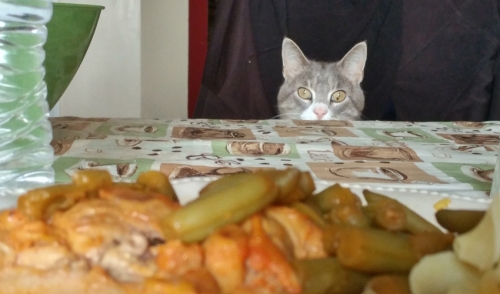
It’s hard to believe sometimes from a pet owner’s perspective that a recent survey has indicated that over 50 percent of America’s pet population is either overweight or obese. When you really think about it almost seems that America’s human obesity problem has trickled down to affect the fury ones we love. However, more often than not we ourselves don’t even realize that our pets have a weight problem. Because we don’t realize that our pets are indeed overweight or obese, we have unconsciously made fat pets a ‘thing.’
Obese pets are in danger of suffering from many medical and physical conditions. The extra fat on your pug may be loveable at first, but the extra pounds he is carrying can limit his physical abilities and shorten his life. Research has shown that as few as five extra pounds in dogs can put them at risk for the following physical disorders: type 2 diabetes, respiratory and heart disease, osteoarthritis and joint problems, high blood pressure, kidney disease, and cancer. More importantly, obese dogs tend to be less active with their owners, have less energy, and become less playful.
So how do you recognize your pet is obese? For starters, if your pet is fed a lot of treats and table food, it’s safe to suggest it is in risk of becoming obese. Furthermore, many owners overfeed their pets by feeding them twice or more a day. Moreover, many owners don’t own a pet scale. Let’s be honest, there are not too many owners who actually spend the money on a pet scale, especially if you have a large dog. Even a human scale for smaller pets can be inaccurate. The problem is that pet owners do not visit the pet enough to receive regular check ups that will confirm your pet’s overall health including its weight. It’s difficult, but without a scale, it’s hard to know if your dog is overweight or obese.
To help your pets avoid obesity and to maintain their weight follow these simple tips. First, always know the ideal weight of your pet. You don’t have to visit the veterinarian every time you want to know how much your dog weighs. In fact, you can gauge their ideal weight just by feeling the area around their ribs. If you can feel the ribs easily, but they are not necessarily seen, and your dog has maintained a defined waist then its in good shape. Anything less or more, and you will need to speak to your vet about next steps. Second, exercise frequently with your pet. With cats this may be difficult, but let your cat out every now and then to make sure it’s staying active. Take your dog out on your next run or for a brisk walk before work. Running or walking with your dog will not only be good for its overall health, its good for yours too! So don’t be afraid to put on your shoes and take your pet out for some fun. Finally, change your pet’s diet. You may not need to change your pets’ food as much as just setting some guidelines for what your pet eats. If your dog is in risk of obesity, don’t feed it any foods from the table. If Grandma’s lasagna adds calories to your diet, what do you think it will do to your pet! Also, account for how many treats your dog eats in a day. Some owners who are married or have kids will feed too many treats, because more than one person in the family is rewarding the dog. A smart and healthy way to add more food to your dog’s diet without adding calories is to add some fresh steamed green beans. These are high in fiber and almost calorie free.
Always speak with your local vet if you’re ever unsure about obesity in your pets and how to maintain it. Weight loss is important to the health of your animals, and a vet is a great place to start the process, especially if you have a cat since they behave differently. Like any kind of weight loss its all easier said than done, but maintaining your pets health is essential to its own health, and even possibly your own.







Comments